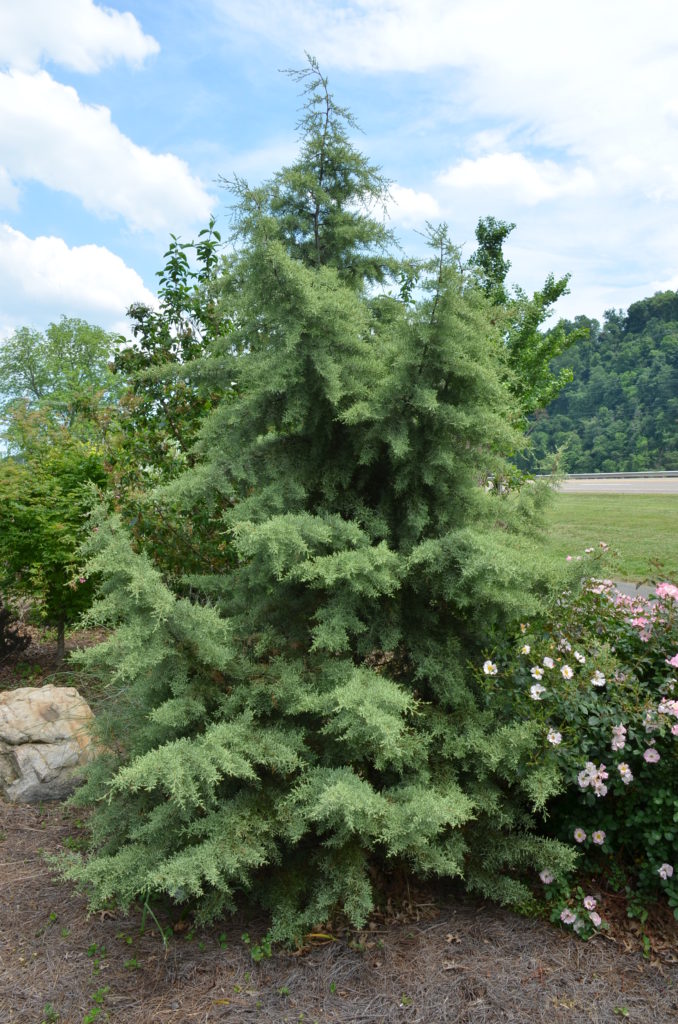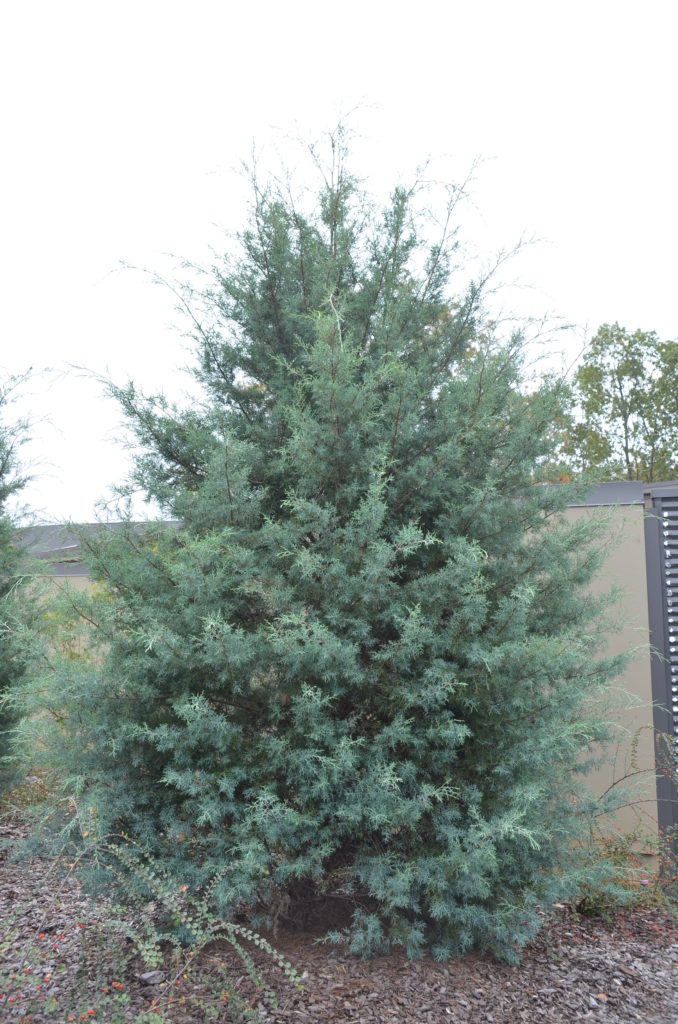
Arizona cypress (Cupressus arizonica var. glabra) is a needle evergreen conifer native to the Southeast U.S. and is noted for its rapid growth rate. It is also grown as a Christmas tree and is rarely troubled by disease and insect problems. Depending on what part of the U.S. that you garden in, damage from bark beetles may occasionally happen.
Arizona cypress requires full sun for best growth and appearance. Varieties are hardy to 0 °F (USDA hardiness zones (5)6-9). Fertilizing this cypress should be stingy due to potential nitrogen burning. This conifer adapts to most soils, as long as moisture drainage is excellent. It needs very little maintenance. When planted in the landscape, Arizona cypress should be provided lots of room to achieve its cone-like or pyramidal form.

Superior varieties include ‘Blue Ice,’ ‘Blue Pyramid,’ ‘Carolina Sapphire’, and ‘Chapparal’. Cultivars Blue Ice and Blue Pyramid tend to develop a tighter pyramidal habit compared to Carolina Sapphire or Chaparral. Chaparral stands out for its light sage-green, fine textured foliage. Carolina Sapphire struts blue-silver needles (not rated winter hardy in zone 5. At maturity, all four varieties may reach 45 feet tall and around 20 feet wide.
Its fabulous blue needle color is more intense during the cold days of winter and needle color is more washed out in shade. A one-year old established Arizona cypress tolerate fairly dry conditions year-round.
If you are looking for a privacy screen, tall hedge or screen, choose Arizona cypress. Plants are pyramidal in shape and definitely grow taller than wide. As a specimen plant ages, branches tend to open up. An old specimen almost takes on a weeping appearance.
Arizona cypress is a Christmas tree in the southwestern U.S. The seeds are eaten by ground squirrels, squirrels, and other rodents. Most years, pruning is often skipped. You will likely opt to remove an aberrant growing branch. Disease and insect problems are very minimal if the site is correct.

 Posted in
Posted in 
